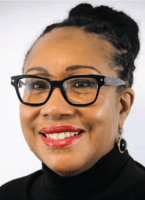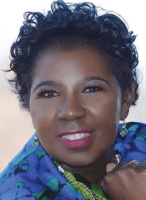Insights and takeaways from experienced nursing professionals.
The nursing profession has begun working toward an ethnically and racially diverse workforce, and healthcare systems, professional organizations, academia, and other stakeholders now realize the positive impact diversity has on patient outcomes. However, achieving this vision has included challenges. According to the American Association of Colleges of Nursing, White women remain the majority (80.6%), whereas nurses from minority backgrounds (19.4%) represent a fraction of the RN workforce. Unfortunately, these statistics haven’t wavered much and continue at a time when nurses are retiring and leaving the workforce for various reasons, including fallout from the COVID-19 pandemic.
Some bedside nurses are exploring other opportunities within the profession, including leadership positions. However, many nurses of color fear that they won’t have the same opportunities as their White counterparts due to biased hiring practices, lack of mentorship, and racism. We interviewed four nurse leaders of color to gain insight into their leadership journeys and to offer those who follow in their footsteps words of wisdom and a foundation to stand on.
Always keep learning
Shirlee M. Drayton Brooks, PhD, FNP-BC, FAANP, distinguished professor and DNP program director, Widener University, Chester, PA


“I’m Black, non-Hispanic. I started off as a staff nurse. After 3 years, I became the nurse manager for a 32-bed comprehensive rehabilitation unit. I stayed in that hospital for 15 years and have worked in academia for over 24 years.”
How many years have you been in leadership? What’s your actual leadership role?
I’ve been in nursing leadership for years. I served as secretary and president of the National Organization of Nurse Practitioners. I continued to serve on the board for an additional 8 years. In fact, I was the first minority president of the organization. Currently, I’m the director of the post-baccalaureate FNP [family nurse practitioner] and DNP [doctor of nursing practice] programs. I came to understand that it’s a wonderful, powerful place to be in the process of education, where I was able to obtain substantial program funding and develop programmatic design. Nursing is now realizing that it needs us [nurse leaders of color] at every level to really be successful with changing health disparities and to improve disproportionate, under-represented or poor health outcomes. Black women experience more pressure. There is the pressure of being different and not accepted. But also, we deal with racism to the point where even our credentials are questioned. Black people like living and working within our own communities even though that might mean not having access to the best resources. These barriers are in the structures, the inputs, and the processes. That’s where structural racism carries its weight to become strategic.
Describe your journey to your leadership role.
I applied to be the care program manager. Despite my experience and credentials, they hired someone with less experience, less time working for the hospital and [who] had not earned a master’s degree. At that time, I was the only female and the only nurse manager of color for about 12 years. This told me that I hit the crystal ceiling, so I left. Women of color in healthcare—as needed as we are—still face those crystal ceilings. I believe it’s important to recognize there are many barriers along the way.
Does your organization recognize your leadership contributions to the organization and the nursing profession? How?
Some years ago, when I first entered academia, I took a substantial decrease in pay. Unfortunately, this still occurs in academia. We often trade fair compensation in exchange for a title and academic rank, or our pay is not equitable to those we train for clinical practice. One should not have to choose.
But today, I would answer yes, my leadership contributions are recognized. I’m a distinguished professor at my current university. This title is designated to someone who has made major contributions in their profession and at the university. From 2007 to 2011, I was appointed to the National Advisory Council [NAC] on nursing education and practice to advise the [U.S. Health and Human Services] Secretary and the U.S. Congress on nursing education and practice. Only 17 people are selected nationwide. Most recently, I became the first woman of color to receive the NAC lifetime achievement award.
What pearls of wisdom would you share with nurses of color interested in pursuing a leadership role?
Before you move into an organization, search its website. Look at the images and read the organization’s mission and vision statements. You should see DEI [diversity, equity, and inclusion] emphasized. If you see pictures with no student or faculty diversity, I wouldn’t want to be there. You’re going to have to work hard to succeed. It’s important to be in an environment where you have people who look like you.
Always keep learning. Become certified as an expert in your area. Be confident in what you know. Do the work and get published. Be involved on committees and attend conferences. Be engaged on the local, regional, and national levels. Take professional development courses in leadership skills. Apply for fellowships. Speak out against inequities. Find a mentor. Most successful people have mentors, which I didn’t have until later in my career. I didn’t understand the value of having one. But in the end, I’ve been fortunate to have some wonderful mentors. One of my mentors was Mary Elizabeth Carnegie.
Believe in yourself
Angel McCullough, DNP, RN, MBA, CCRN, NEA-BC, C-PCC, director of nursing operations and patient care services, Thomas Jefferson University, Philadelphia, PA; founder and CEO, ANGEL Leadership Consulting


“I’m African American, non-Hispanic. I became a registered nurse in 2002, so I’ve been practicing for 21 years. I worked as a patient care tech and an EMT [emergency medical technician] in nursing school. And then as a full-time staff nurse in the ICU [intensive care unit] for 2 years before I became a manager.”
How many years have you been in leadership? What is your actual leadership role?
I’ve been in leadership since early 2005, when I became a nurse manager. Most recently I was promoted from nurse manager to senior director of nursing operations and patient care services. I’m also CEO [chief executive officer] and owner of ANGEL Leadership, a consulting company that mentors and empowers Black, Brown, and minority people.
Does your organization recognize and address the needs of the diverse nurse? How?
The health system has done a lot over the past 6 years, as have many other organizations that I was employed at prior to my current employer. The platform is here and now for diversity. I think people are finally noticing that there’s a place at the table for this conversation.
What pearls of wisdom would you share with nurses of color interested in pursuing a leadership role?
Be intentional about everything that you do. Take advantage of every opportunity presented. Believe in yourself. Understand who you are, and be confident in what you know and how your ethnic background is going to be received by others when you step up as a leader. Take every opportunity to participate on councils or initiatives that will bring change or create policies. Leaders of color are needed in the nursing profession. Remember your why and remember you are not alone.
Be faithful where you are
Joanne Ruggiero, MSN MA, RN, NE-BC, senior VP and CEO, Holtz Children’s Hospital and the Women’s Hospital at Jackson Memorial, Miami, FL


“I’m Hispanic Puerto Rican. Overall, I think [I’ve been practicing for] about 18 years now. I started as a bedside nurse in labor and delivery, and I worked [in that role] maybe going on 8 years before I took a leadership position.”
How many years have you been in leadership? What is your actual leadership role?
I took a leadership position on a medical-surgical cardiology unit for about 6 years before I returned to women’s health, where I became a clinical director. I oversaw the entire women’s health service department, which included labor and delivery, high-risk antepartum, postpartum, well baby nursery, and the intensive care nursery. Later, I moved to Miami to take a chief nursing officer [CNO] role. I worked in the role for about 8 months before working in my current role as the chief executive officer [CEO] of a women and children’s hospital. I oversee all of the operational components and the business and growth development involved in running an acute care facility, which includes inpatient, outpatient, and operative care. We also have community sites that I oversee.
Describe your journey to your leadership role.
At first, I thought leadership isn’t for me; I’m going into education. However, someone else saw something in me that I did not see in myself. She saw leadership potential and believed in me. She coached and mentored me for an entire year in the nurse manager role. This prepared me to become the director of women’s health at a hospital that had over 5,000 deliveries per year. This catapulted my career to be the CNO of the women’s and children’s hospital, which pivoted into my current position as the CEO. This is monumental because very few nurses become CEOs of hospitals. It’s rewarding to be a nurse in the CEO position because nursing drives quality when implementing processes and procedures.
Does your organization recognize and address the needs of the diverse nurse? How?
We actually are in a very unique situation here. And I say this because our nursing workforce mimics our patient population, and that’s powerful. This is hard to get done in a lot of organizations, but Miami is a melting pot so it happened organically. We’re able to recruit from schools that graduate diverse students. When this doesn’t naturally occur because of demographics and location, recruitment of diverse nurses has to be intentional to improve patient outcomes. Being a nurse of color, I bring a different perspective. There’s power in that. It serves as a catalyst for having uncomfortable conversations in real-time, which brings about positive change and improves patient outcomes. Also, being a leader at the table with other highly diverse leaders, I feel like we have a responsibility to bring about change.
Does your organization recognize your leadership contributions to the organization and the nursing profession? How?
Yes, within 8 months of being in the CNO position, I was promoted. I was also provided with the tools and resources to be successful as the CEO. My employer is paying for me to get a master’s in business administration and a doctorate in nursing practice.
What have you done or would do to inspire the future nurse leaders of color?
You know your own value and what you bring to the table. I wanted my voice to be heard and to make a difference, so I would encourage them to do the same. I would also tell them to stay at the core of who they are as they move into leadership roles. Currently, I serve as a mentor for several younger nurse leaders. I really believe in doing the same thing that somebody did for me. As nurse leaders, we really need to tap into potential talent.
What pearls of wisdom would you share with nurses of color interested in pursuing a leadership role?
Don’t focus as much on the next step but be faithful where you are, and that has really been what has driven me in all of my positions. Bear fruit where you are in the present. Don’t worry about tomorrow. Seek mentorship. It’s most important on the days when you want to give up. You’re not meant to walk this walk alone.
It’s okay to be uncomfortable
Norma Rogers Frink, BSN, RN, CCRA, ACRP-PM, RP, clinical operations manager, Syneos Health, Morrisville, NC


“I’m African American. I think I’m in year 36 [of practice]. I started my career in nursing as an LPN [licensed practical nurse] and then became an RN.”
How many years have you been in leadership? What is your actual leadership role?
As a student nurse, I was the president of the New Jersey Nursing Students, so my leadership roles started in 1996 as a nursing student. After that I was elected as NJSNA [New Jersey State Nurses Association] Region 3 president (2011–2012), NJSNA president (2015–2017), and re-elected as NJSNA Region 3 president (2020–2022).
Describe your journey to your leadership role.
My advisor at the second National Student Nurses Conference arranged for me to have breakfast with my idol, Dr. Beverly Malone. As a student, that one-to-one conversation with Dr. Malone was inspiring. I told her that I wanted to be her when I grew up. She gave me tidbits on what to do, what path to follow, and encouraged me to be involved in my nursing associations. When I was elected as president of NJSNA, people didn’t think that I was ready as a woman of color and as a nurse with a bachelor’s degree. You know in nursing, without certain letters after your name, some felt that I wasn’t ready, when really, they weren’t ready for me.
Does your organization recognize and address the needs of the diverse nurse? How?
The organizations are starting to. The NJSNA and American Nurses Association (ANA) still have some barriers that they’re working on. Unfortunately, both organizations continue to have a majority White membership. They’re getting better. I can say that over the years that I’ve been involved, I’ve seen more people who look like me at the ANA membership assembly. You know they still have a long way to go. Elitism remains a barrier within nursing that challenges nurses of color. But many nurses of color have found a place for themselves in the National Black Nurses Association and Chi Eta Phi Sorority, Inc.
What have you done or would do to inspire the future of nurse leaders of color?
I believe in being present. I make myself available to nurses when they call and have questions. Sometimes you need somebody to work with you who understands what you’re going through. I help to connect people to the right people. It takes a village to raise a nurse leader. My new nickname is the Village Keeper.
What pearls of wisdom would you share with nurses of color interested in pursuing a leadership role?
It’s okay to be uncomfortable. You only learn and grow when you’re uncomfortable. Get out of your comfort zone. Create a support circle around you—one that will tell you when you’re right but also tell you when you’re wrong. And you have to be open to listening to that advice and not take it personally.
Takeaways
The conversations with these four nurse leaders of color provided indispensable advice, hope, and encouragement for those who are considering leadership roles. Important takeaways for organizations include the following:
- Create mentorship programs for nurses who may be interested in a leadership role.
- Offer leadership shadowing opportunities that foster self-development and exploration.
- Drive policy that promotes diversity, equity, and inclusion practices at all levels.
- Implement effective strategies that recruit and retain nurse leaders of color.
- Promote professional development and succession planning.
For individual nurses pursuing leadership opportunities, develop a professional network of resources by seeking membership in and actively engaging with professional nursing organizations committed to DEI. They can offer the support and guidance essential for success.
Many professional nursing organizations, including the ANA, American College of Nurse Midwives, and the AACN, are actively working toward rectifying past indiscretions by acknowledging and repairing the impact of systemic racism on advancing nursing science. Although acknowledgement and reparations are critical steps in the change process, these organizations also must measure outcomes and improve on ineffective actions.
Jawanza Bundy is an assistant professor at Widener University School of Nursing in Chester, Pennsylvania. Yolanda Nelson is an assistant professor at The College of New Jersey in Ewing. Elissa Harmon is the coordinator of patient care services at Thomas Jefferson University Hospital in Philadelphia, Pennsylvania. DeLisa Cofer is the assistant dean of undergraduate programs at Widener University School of Nursing.
American Nurse Journal. 2023; 18(6). Doi: 10.51256/ANJ0623130
References
American Association of Colleges of Nursing. Enhancing diversity in the nursing workforce. April 2023. aacnnursing.org/News-Information/Fact-Sheets/Enhancing-Diversity
American Nurses Association. National Commission to Address Racism in Nursing. April 6, 2021. nursingworld.org/practice-policy/workforce/racism-in-nursing/national-commission-to-address-racism-in-nursing


















